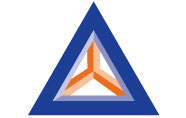
25 May What Would Sir Richard Branson Do? Overriding Overwhelm and Accessing Our Limitless Self
{6:30 minutes to read} The impact of the industrial age on our thinking is far-reaching. Linear thinking is a perfect match for a society based on hierarchical structures. Many of our existing institutions, bureaucracies, and organizations are steeped in the language and thinking of an industrial age model.
However, tapping into the multidimensional nature of your social capital and your limitless self requires shifting to a new paradigm: becoming fluent in the language of non-linear thinking. Thanks to the breakthroughs in quantum physics, the planet is more quickly making the move to this new paradigm.
There are many authors and thought leaders who utilize the principles of quantum physics in their messaging. Deepak Chopra was a key contributor in integrating quantum principles into everyday vernacular with many of his books, in particular, The Seven Spiritual Laws of Success, where he talks about the “infinite field of possibility,” known by physicists as the quantum field. Another thought leader who brings the principles of quantum physics to life in an incredibly user-friendly manner is author/consultant Dianne Collins. For those looking to shift to non-linear thinking, I enthusiastically recommend her book Do You QuantumThink?.
One of the principles I learned in working with Dianne is the idea that we have been conditioned by the industrial age culture to think of ourselves as “limited by chronological time and physical space.” Linear thinking by its nature is based in limitation; it has edges. Non-linear thinking is boundless.
Here’s an example which demonstrates this so poignantly in our day-to-day lives. Imagine holding a large hardcover book in your hand, then start to put things on top of the book, such as scotch tape, a pen, several items from your desktop; maybe even add your cell phone into the mix. Soon there will be a moment that resembles the experience many of us have when we exclaim, “There’s just too much on my plate!”
Then someone we respect invites us to be part of a leadership board or fundraising committee. They are literally bestowing a great honor upon us with this invitation. Because the project is so important to our VIP, we feel grateful and compelled to say yes. Before our VIP’s invitation, our head was barely above water with all the other commitments and initiatives we were managing, and upon agreeing to add this last straw to the pile, we can feel our head going under. Consider that our “knee-jerk” response to this scenario is a function of our linear programming: the notion that we are “maxed out,” at the edge of our capacity. We go back to our VIP, thank them for the opportunity, and as we resign from the initiative or decline the invitation, we utter those famous words to explain our predicament: “I am so sorry, I just can’t do it right now; I simply have too much on my plate…”
Compare this to someone else who undeniably has a lot on his plate — Sir Richard Branson. His organization, the Virgin Group, controls over 400 companies. However, when you see a picture of him, he’s grinning from ear to ear (practically giggling) while standing on his boat or brainstorming in his hammock. On his plate are his 401 companies, his multiple non-profits, numerous properties and boats, family and personal commitments…so let’s round that up to 425. When I’ve asked my clients to explore all the things on their plate (business projects, family commitments, health and fitness goals, real estate and other financial initiatives, as well as community, spiritual, and artistic endeavors), usually it all rounds up to around 25, or in some cases 125, items on their plate. And no kidding, they’ve admitted to me: it really is a feeling of utter overwhelm with the addition of just one more thing.
While the usual response to that “one more thing” is “So sorry, no can do; too much on my plate,” I’m fascinated how peak performers defy all logic in response to that “one more thing.” When Sir Richard Branson gets a call from one of his VIPs who says, “RB, I got an idea for company #402,” his response is akin to leaning in and saying, “Bring it on!!!”
Tony Robbins says a great life has more to do with the powerful questions we ask than the answers we come up with. When you look at your plate of 25 major projects and commitments, see if you can catch yourself in the knee-jerk reaction of speaking those magic words (“Too much on my plate!”). It’s magic because when you witness yourself doing ANYTHING automatic, you are waking up, you are in witness mode, observing your machinery in action. And it’s at that moment I invite to take a step back and ask yourself this game-changing question: “What would Sir Richard Branson do?”
For fun, imagine you have a bracelet on your wrist with the letters WWSRBD: What would Sir Richard Branson do?
In the moment of witnessing yourself having an automatic, mechanistic thought pattern, this state of “observer” is an indication that you’ve transcended linear thinking, and stepped into the realm of limitless, non-linear thinking. Knowing what RB would actually do isn’t where the power is. It’s all in the question — the question is access to the realm of witnessing from beyond the very constraints which just moments before served as limits.
Asking that question has the power to jolt you from being overwhelmed to being an observer of the occurrence. Even without us knowing what Sir Richard Branson would actually do, asking the question can help us create a new context — a new filter — from which to see what’s happening in life. From that moment, you can shift your focus from each item on your plate to seeing the plate itself. Working on the plate (the context of life) vs. working on the stuff on the plate (the content of life) is how peak performance and breakthrough results are sourced.
What is the plate from which you see your life? Until you begin to notice the plate itself, it’s difficult to expand its edges. Whether it’s working with a peak performance coach, doing yoga, or plugging into a breakthrough thinking mastermind group, the use of mindfulness tools and structures will allow you to tap into this state of centered awareness — which in turn, allows for the next perfect action to reveal itself. Being in that state of calm opens the channel for your brilliance, and provides access to your non-linear, limitless self.

Cynthia Greenawalt
954-214-2511
cynthia@seachangenetworking.com


No Comments